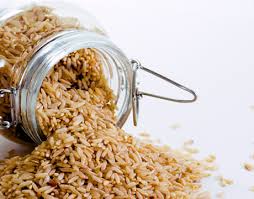Did you know that by increasing your fiber intake by just 10g per day you could decrease your risk of premature death by 11%!?
Pretty crazy, right?
The other week, I was contacted by a heath writer about a study published in the American Journal of Epidemiology which showed a protective association between fiber and premature death.
The article was published last week – click here to read
I weigh in at the very bottom of the piece. I had some other thoughts about the study and its application for you so I broke it down Q&A style for easier digestion (pun intended!!).

Why does fiber matter? Aren’t fiber recommendations unreasonable?
Fiber is a good barometer for the quality of the carbohydrates that you are eating. The more processed the carbohydrates, the less fiber you will get from them. Fiber recommendations are 14g per 1000 calories you eat. This could be 30-40g depending on your calorie intake.
If you are eating a low carbohydrate diet, it is near impossible to get 35g of fiber in your diet because you aren’t eating that many carbs to start out with (you might not need that much with low carb, but that is another discussion for another post).
Otherwise…to be completely honest…if you are getting less than 20g of fiber per day (which is average for guys), you should be embarrassed. Start eating better quality food!
How can you get an extra 10 grams of fiber in your diet? Won’t you need to eat a lot more food?
Not necessarily. This may not be an issue of eating more food, but instead modifying some of the foods that you are currently eating.
For example…
- Eat bread that contains at least 3 grams of fiber per slice, if you currently eat a sandwich each day made with white bread or something similar (you’d be surprised how many slices of bread only have 1g of fiber per slice). You’ll net 4 grams right there just from buying better bread.
- If you eat Greek yogurt (regular yogurt or cottage cheese) at breakfast or for an afternoon snack, try mixing in 1 Tbsp of chia seeds. This will give you another 5 grams of fiber.
- In the morning, if you switch from eating a cup of strawberries to a cup of raspberries, you’ll net another 5 grams of fiber.
- Beans are another easy way to bump up the fiber in your diet. A 1/2 cup of canned beans contains 7.5g of fiber. It is pretty simple to add a 1/2 cup of black or kidney beans to a salad at lunch. Or, if you are having rice at dinner, switch out some of the rice with beans, or switch from white rice to brown rice.
Does the kind of fiber matter?
I wouldn’t worry too much about the kind of fiber. Most of the large population based studies report data that supports the benefits of cereal grains fibers over other fibers.
While I think that eating whole grains over refined grains (which give you more fiber from grains) is beneficial for your health, I question the utility of replacing fruits and vegetables for cereal grains in your diet to get more fiber.
I recommend that clients get fiber from a variety of sources. Fibers from cereal grains are great. That is where you get certain soluble fibers and different kinds of prebiotic fibers. But you can also get prebiotic fibers from beans, and soluble fiber, like pectin, from apples.
Where is the Fiber?
Recently, I gave a nutrition talk to a small group here in Rochester. One the actionable take home messages for them was to look at each of their meals before they ate and ask the question –
“Where is the fiber?”
Fiber is a good marker of carbohydrate quality for your meal. If you can’t find the fiber in your meal, you aren’t eating enough vegetables and your starches/grains selection needs to be revamped.
Action Step: Over the next couple days take some time to be cognizant of the fiber in your diet, how much you are getting and where you are getting it. Ask, “Where is the fiber?” at each of your meals. Too many people don’t get enough fiber – don’t be that person!





